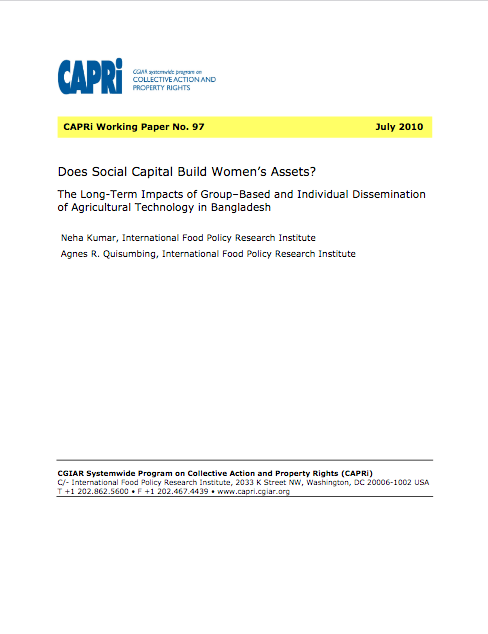Does social capital build women's assets? The long-term impacts of group-based and individual dissemination of agricultural technology in Bangladesh
Abstract
This paper investigates the long–term impact of agricultural technologies, disseminated using different implementation modalities, on men’s and women’s asset accumulation in rural Bangladesh. Data were collected in 1996–97 to examine the effects of the adoption of new vegetable varieties and polyculture fishpond management technologies on household resource allocation, incomes, and nutrition, and a followup survey was conducted ten years later. We make three types of comparisons using nearest neighbor matching, comparing (1) early and late adopters of the technology; (2) NGO members with access to the technology and those without access to the technology; and (3) NGO members vs. non–NGO members. Our results suggest that implementation modalities are important in determining the impact of new technologies on men’s and women’s asset accumulation. Women’s assets increase more relative to men’s when technologies are disseminated through women’s groups. These findings are robust to controls for unobserved household–level characteristics. These results suggest that social capital, as embodied through women’s groups, not only serves as a substitute for physical assets in the short run, but helps to build up women’s asset portfolios in the long run.

